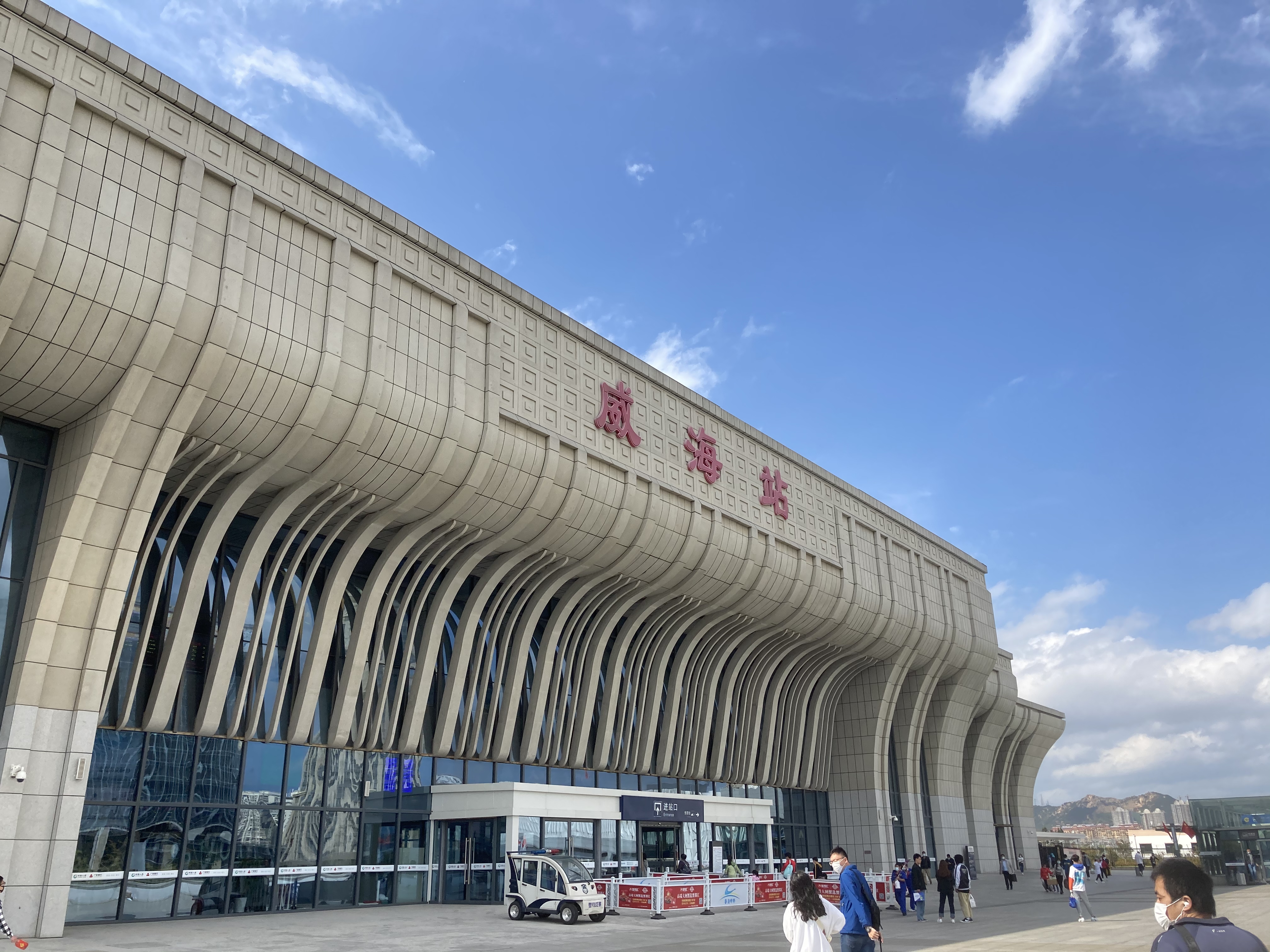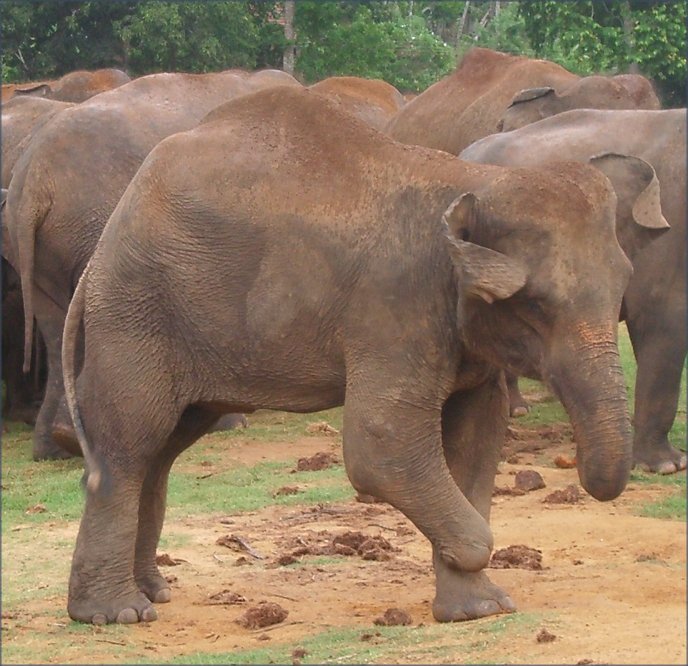|
Ryongyŏn
Ryongyŏn County is a county in western South Hwanghae province, North Korea. Its Yellow Sea coast is known for its natural environment and as an important habitat for plants and birds. Ryongyŏn was the first place in which Protestant Christianity was established in Korea, in the late 19th century. Geography Ryongyŏn is a coastal county of 463 km2, facing the Yellow Sea to the south and northwest. It also borders Changyon county to the northeast, and Taetan county to the east. Its territory includes several islands to the south: Wollaedo (), Ojakdo (오작도), and Yukdo (육도). Ryongyŏn is separated from the South Korean Baengnyeong Island by a strait 12 km wide, and can be clearly seen from South Korean resorts on clear days. The Pult'a Mountains (불타산맥) run through the county from east to west. The western part of the chain projects into the Yellow Sea, forming the Ryongyŏn Peninsula, with Changsan Cape at its western end (장산곶). The territory is ... [...More Info...] [...Related Items...] OR: [Wikipedia] [Google] [Baidu] |
Changyon
Changyŏn County is a county in South Hwanghae province, North Korea. Geography Changyŏn is bordered to the north by Kwail and Songhwa, to the east by Samch'ŏn and T'aet'an, to the south by Ryongyŏn, and to the west by the Yellow Sea. Most of the land in Changyŏn is composed of flat plains, with mountains forming its borders. The highest point is Pultasan, Mt. Pult'a, at . History Changyŏn county was created under the Yi dynasty. Chaeryŏng was briefly merged into the newly formed Hwanghae District in 1895 during an experimental redistricting, but was restored to its previous form in 1896. The county's current form was settled in the 1952 redistricting changes, when the entire south of the county was split away to form Ryongyŏn county. In 1956 it became part of South Hwanghae Province when the former Hwanghae Province was split. Transportation The county is served by the Changyon Line, Changyŏn Line of the Korean State Railway, which stops at Ragyon Station, Ragyŏn and Cha ... [...More Info...] [...Related Items...] OR: [Wikipedia] [Google] [Baidu] |
List Of Second-level Administrative Divisions Of North Korea
This is a list of all second-level administrative divisions of North Korea, including ''cities'', ''counties'', ''workers' districts'', ''districts'' or ''wards'', organized by province or directly governed city. Pyongyang Directly Governed City * 18 wards (guyok): Chung-guyok, Chung, Hwasong-guyok, Pyongchon-guyok, Pyongchon, Potonggang-guyok, Potonggang, Moranbong-guyok, Moranbong, Sosong-guyok, Sosong, Songyo-guyok, Songyo, Tongdaewon-guyok, Tongdaewon, Taedonggang-guyok, Taedonggang, Sadong-guyok, Sadong, Taesong-guyok, Taesong, Mangyongdae-guyok, Mangyongdae, Hyongjesan-guyok, Hyongjesan, Ryongsong-guyok, Ryongsong, Samsok-guyok, Samsok, Ryokpo-guyok, Ryokpo, Rangnang-guyok, Rangnang, Sunan-guyok, Sunan, Unjong-guyok, Unjong * 2 county (kun): Kangdong, Kangnam County, Kangnam Rason Special City * 2 ward (guyok): Rajin-guyok, Rajin, Sonbong-guyok, Sŏnbong Kaesong Special City * 2 ward (guyok): Kaepung-guyok, Kaep'ung, Panmun-guyok, P'anmun * 1 county (kun): Changpung County ... [...More Info...] [...Related Items...] OR: [Wikipedia] [Google] [Baidu] |
Horace Underwood
Horace Grant Underwood (19 July 1859 – 12 October 1916) was an American Presbyterian missionary, educator, and translator who dedicated his life to developing Christianity in Korea. Early life Underwood was born in London, England, United Kingdom and immigrated to the United States at age 12. He graduated from New York University in 1881 and New Brunswick Theological Seminary in 1884. Work in Korea It is said that Underwood was moved by a letter from Lee Soo-jung (the first translator of the Bible into Korean) published in an American Bible Society publication, which inspired him to commit to missionary work in Korea. Underwood served as a Northern Presbyterian Church missionary in Korea, teaching physics and chemistry at Gwanghyewon in Seoul, the first modern hospital of Korea. Underwood arrived in Korea on the same boat as Henry G. Appenzeller on Easter Sunday (5 April) 1885, and he also worked with Henry Appenzeller, William B. Scranton, James Scarth Gale, and Willi ... [...More Info...] [...Related Items...] OR: [Wikipedia] [Google] [Baidu] |
Gyeonggi
Gyeonggi Province (, ) is the most populous province in South Korea. Seoul, the nation's largest city and capital, is in the heart of the area but has been separately administered as a provincial-level ''special city'' since 1946. Incheon, the nation's third-largest city, is on the coast of the province and has been similarly administered as a provincial-level ''metropolitan city'' since 1981. The three jurisdictions are collectively referred to as '' Sudogwon'' and cover , with a combined population of over 26 million - amounting to over half (50.25%) of the entire population of South Korea, and a third of the population of the Korean peninsula at the 2020 census. Etymology Its name, ''Gyeonggi'', means "京 (the capital) and 畿 (the surrounding area)". Thus, ''Gyeonggi Province'' can be translated as "Seoul and the surrounding areas of Seoul". History Gyeonggi Province has been a politically important area since 18 BCE, when Korea was divided into three nations durin ... [...More Info...] [...Related Items...] OR: [Wikipedia] [Google] [Baidu] |
Weihai
Weihai ( zh, t=, p=Wēihǎi), formerly Weihaiwei ( zh, s=, p=Wēihǎiwèi, l=Mighty Sea Fort, first=t), is a prefecture-level city and major seaport city in the easternmost Shandong province of China. It borders Yantai to the west and the Yellow Sea to the east, and is the closest mainland Chinese city to South Korea (specifically, Chengshan to Yeonpyeongdo). Compared with the 2,804,771 people in the 2010 Chinese census, there has been a total increase of 101,777 people over the past decade, an increase of 3.63%, with an average annual growth rate of 0.36%. Weihai's population was 2,906,548 as of the 2020 Chinese census, of whom 1,164,730 lived in the current built-up (''or metro'') area of (Huancui District) even though Wendeng, Shandong, Wendeng district to the south with 563,529 inhabitants is soon being conurbated. There are two county-level cities within Weihai; Rongcheng, Shandong, Rongcheng had a built up area with 714,211 inhabitants, while Rushan, Shandong, Rushan had 464 ... [...More Info...] [...Related Items...] OR: [Wikipedia] [Google] [Baidu] |
Seoul
Seoul, officially Seoul Special Metropolitan City, is the capital city, capital and largest city of South Korea. The broader Seoul Metropolitan Area, encompassing Seoul, Gyeonggi Province and Incheon, emerged as the world's List of cities by GDP, sixth largest metropolitan economy in 2022, trailing behind New York metropolitan area, New York, Greater Tokyo Area, Tokyo, Greater Los Angeles, Los Angeles, Paris metropolitan area, Paris, and London metropolitan area, London, and hosts more than half of South Korea's population. Although Seoul's population peaked at over 10 million, it has gradually decreased since 2014, standing at about 9.6 million residents as of 2024. Seoul is the seat of the Government of South Korea, South Korean government. Seoul's history traces back to 18 BC when it was founded by the people of Baekje, one of the Three Kingdoms of Korea. During the Joseon dynasty, Seoul was officially designated as the capital, surrounded by the Fortress Wall of Seoul. I ... [...More Info...] [...Related Items...] OR: [Wikipedia] [Google] [Baidu] |
North Korean Famine
The North Korean famine (), dubbed by the government as the Arduous March (), was a period of mass starvation together with a general economic crisis from 1995 to 2000 in North Korea. During this time there was an increase in defection from North Korea which peaked towards the end of the famine period. The famine stemmed from a variety of factors. Economic mismanagement and the loss of Soviet support caused food production and imports to decline rapidly. A series of floods and droughts exacerbated the crisis. The North Korean government and its centrally planned system proved too inflexible to effectively curtail the disaster. North Korea attempted to obtain aid and commercial opportunities, but failed to receive initial attention. Estimates of the death toll vary widely. Out of a total population of approximately 22 million, somewhere between 240,000 and 3,500,000 North Koreans died from starvation or hunger-related illnesses, with the deaths peaking in 1997.Noland, Marc ... [...More Info...] [...Related Items...] OR: [Wikipedia] [Google] [Baidu] |
International Campaign To Ban Landmines
The International Campaign to Ban Landmines (ICBL) is a coalition of non-governmental organizations whose objective is a world free of anti-personnel mines and cluster munitions, where mine and cluster munitions survivors see their rights respected and can lead fulfilling lives. The coalition was formed in 1992 when six organisations with similar interests (France-based Handicap International, Germany-based Medico International, UK-based Mines Advisory Group, and US-based Human Rights Watch, Physicians for Human Rights and Vietnam Veterans of America Foundation) agreed to cooperate on their common goal. The campaign has since grown and spread to become a network with active members in some 100 countries—including groups working on women, children, veterans, religious groups, the environment, human rights, arms control, peace and development—working locally, nationally and internationally to eradicate antipersonnel landmines. A prominent supporter was Diana, Princess ... [...More Info...] [...Related Items...] OR: [Wikipedia] [Google] [Baidu] |
Land Mine
A land mine, or landmine, is an explosive weapon often concealed under or camouflaged on the ground, and designed to destroy or disable enemy targets as they pass over or near it. Land mines are divided into two types: anti-tank mines, which are designed to disable tanks or other vehicles; and anti-personnel mines, designed to injure or kill people. Land mines are typically pressure activated, exploding automatically when stepped on by a person or driven over by a vehicle, though alternative detonation mechanisms are sometimes used. A land mine may cause damage by direct blast effect, by fragments that are thrown by the blast, or by both. Land mines are typically laid throughout an area, creating a ''minefield'' which is dangerous to cross. The use of land mines is controversial because of their indiscriminate nature and their potential to remain dangerous many years after a conflict has ended, harming civilians and the economy. With pressure from a number of campaign gro ... [...More Info...] [...Related Items...] OR: [Wikipedia] [Google] [Baidu] |
Special Forces
Special forces or special operations forces (SOF) are military units trained to conduct special operations. NATO has defined special operations as "military activities conducted by specially designated, organized, selected, trained and equipped forces using unconventional techniques and modes of employment". Special forces emerged in the early 20th century, with a significant growth in the field during World War II, when "every major army involved in the fighting" created formations devoted to special operations behind enemy lines. Depending on the country, special forces may perform functions including Airborne forces, airborne operations, counter-insurgency, counter-terrorism, foreign internal defense, Covert operations, covert ops, Direct action (military), direct action, Hostage crises, hostage rescue, high-value targets/Manhunt (military), manhunt, intelligence, surveillance, target acquisition, and reconnaissance, intelligence operations, Mobility (military), mobility o ... [...More Info...] [...Related Items...] OR: [Wikipedia] [Google] [Baidu] |
United Nations Partisan Infantry Korea
The United Nations Partisan Infantry Korea (UNPIK; ) was a guerrilla commando unit during the Korean War that was consolidated under the control of United States Far East Command. The details of the undercover operation were made public by the US Army in 1990. The unit worked deep inside North Korea to gathering military intelligence, conduct clandestine operation, commando style raids to cause chaos, irregular warfare, long-range penetration, recruit and lead guerrilla armies and create confusion in the enemy's rear, search and rescue POWs, and special operations behind enemy lines. History * In November 1952: 8240th Army Unit and other guerrilla commando units were redesignated as United Nations Partisan Forces Korea (UNPFK) * In September 1953: The name changed to United Nations Partisan Infantry Korea (UNPIK) UNPIK was disbanded in 1954. Operations The island Wollaedo in the Yellow Sea was used as a base by pro-Southern partisans during the war. This position was regula ... [...More Info...] [...Related Items...] OR: [Wikipedia] [Google] [Baidu] |








